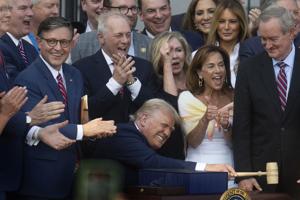The Trump Administration is poised to advance a significant push for a second budget rescission package, signaling a steadfast commitment to fiscal conservatism and a re-evaluation of federal expenditures. This move follows closely on the heels of an initial $9 billion spending cut, which targeted areas like foreign aid and government broadcasting, indicating a clear trajectory for the White House’s economic agenda.
The initial rescission package, successfully navigated through US Congress, served as a tangible demonstration of the administration’s resolve to trim what it deemed unnecessary spending. It primarily aimed at redirecting funds and curbing appropriations, setting a precedent for further attempts to reallocate taxpayer money away from certain established programs and towards the administration’s priorities.
This aggressive pursuit of additional budget cuts underscores a core tenet of the Trump Administration’s fiscal philosophy: reducing the national debt and reining in what it perceives as excessive government outlays. The White House has consistently vocalized its intent to scrutinize every dollar spent, making these congressional spending debates central to its policy narrative.
However, the path for any subsequent foreign aid cuts or broad budget rescission efforts through the legislative branch is fraught with potential challenges. The intricacies of US politics dictate that securing bipartisan support for such measures can be complex, often requiring delicate negotiations between the executive branch and both chambers of Congress.
Legislators from both the Republican and Democratic parties will undoubtedly engage in rigorous debate, weighing the implications of these proposed cuts on various sectors. The impact on international relations, domestic services, and ongoing governmental operations will be key points of contention as the administration seeks to solidify its fiscal reforms.
Historically, budget rescissions have been utilized by presidents to curb spending or eliminate funds for programs deemed obsolete or inefficient. The current administration’s proactive stance highlights a strategic effort to leverage this mechanism as a regular tool for fiscal management, rather than an infrequent intervention.
The push for a second package also reflects the administration’s broader strategy to assert executive authority over federal spending, potentially shifting power dynamics within the US government. This ongoing tug-of-war over appropriations defines a significant aspect of contemporary US politics and legislative processes.
As the prospect of a second budget rescission package looms, observers will be keen to see how Congress responds and what compromises, if any, will be reached. The outcome will not only shape immediate fiscal policy but also set a precedent for future interactions between the White House and the legislative branch regarding the nation’s financial priorities.






Leave a Reply